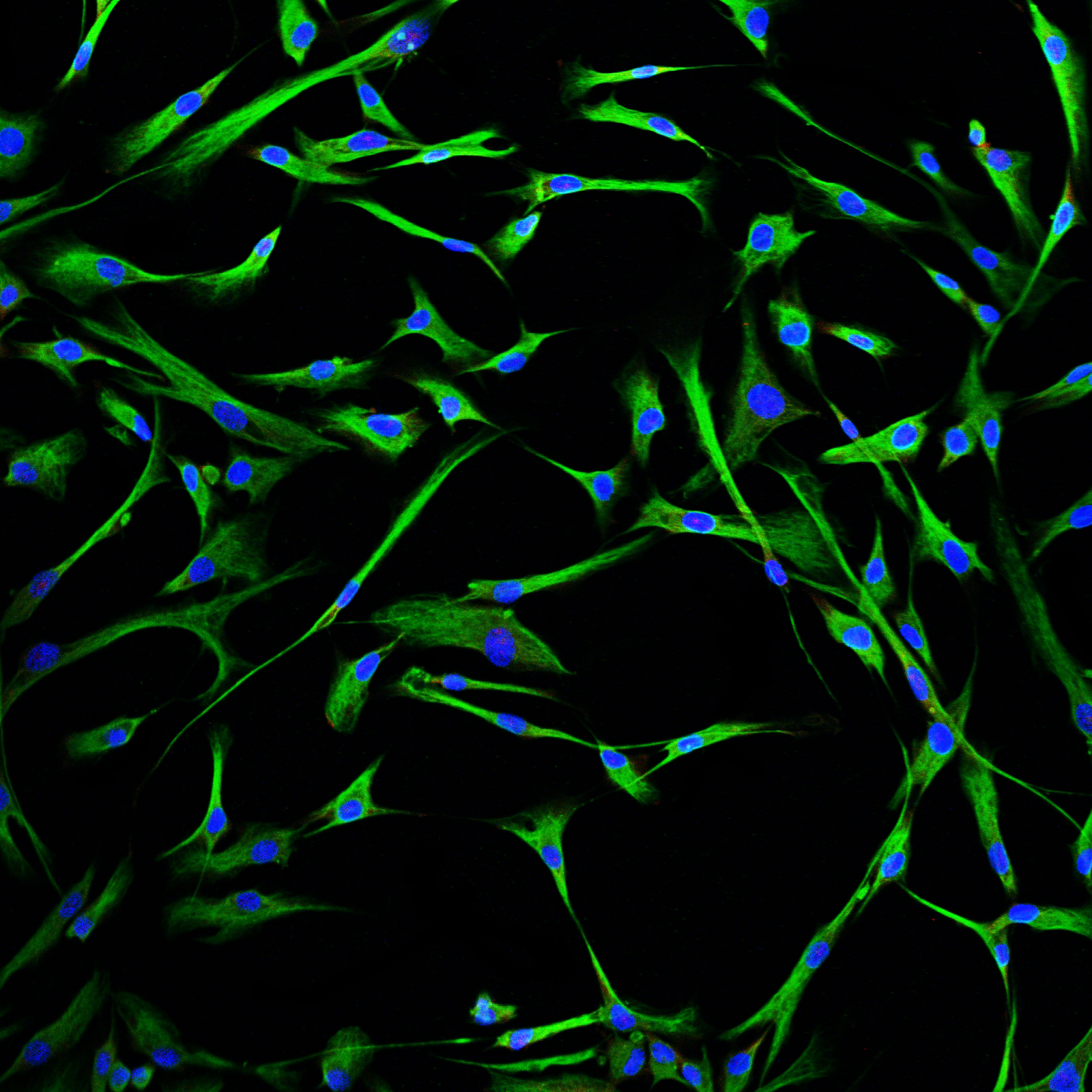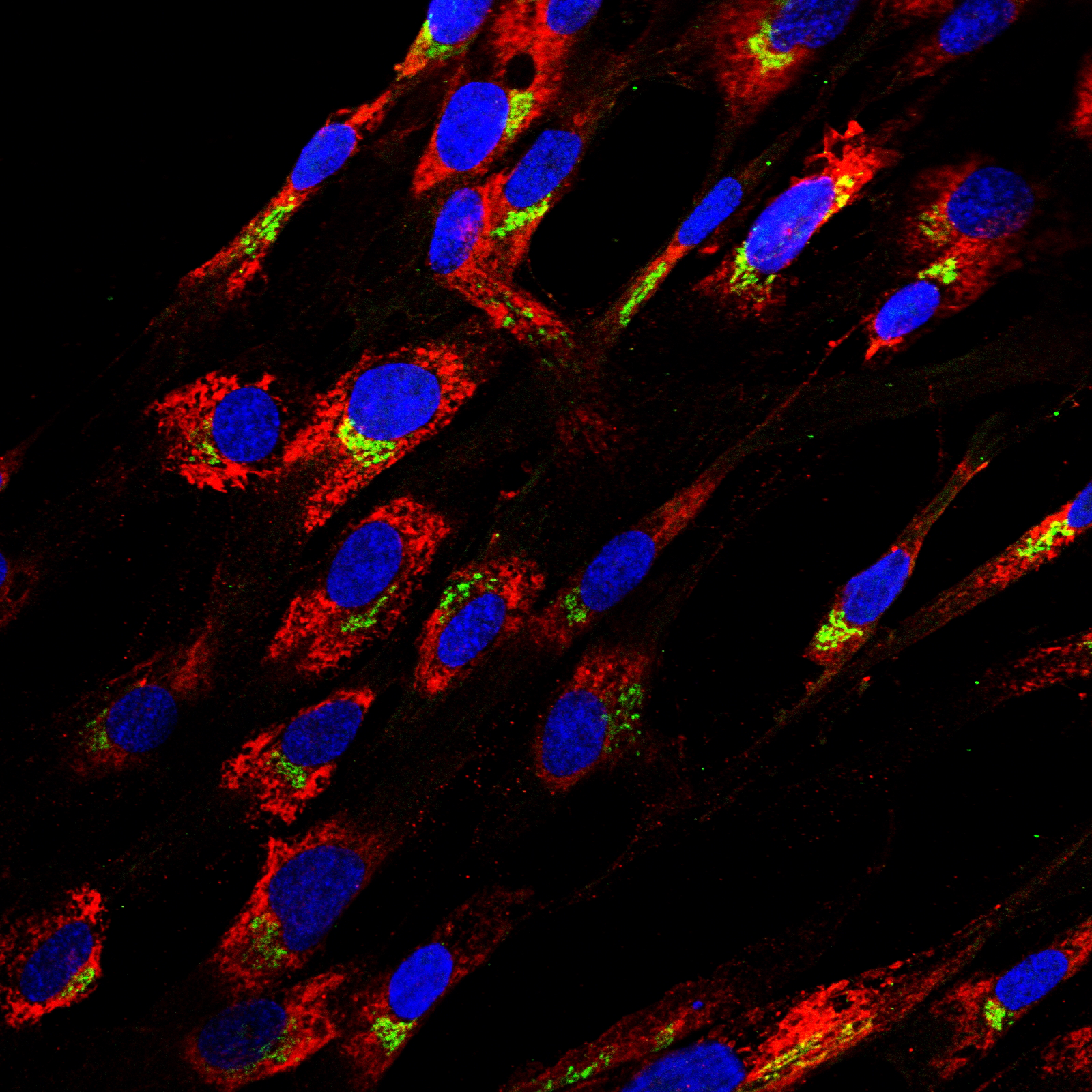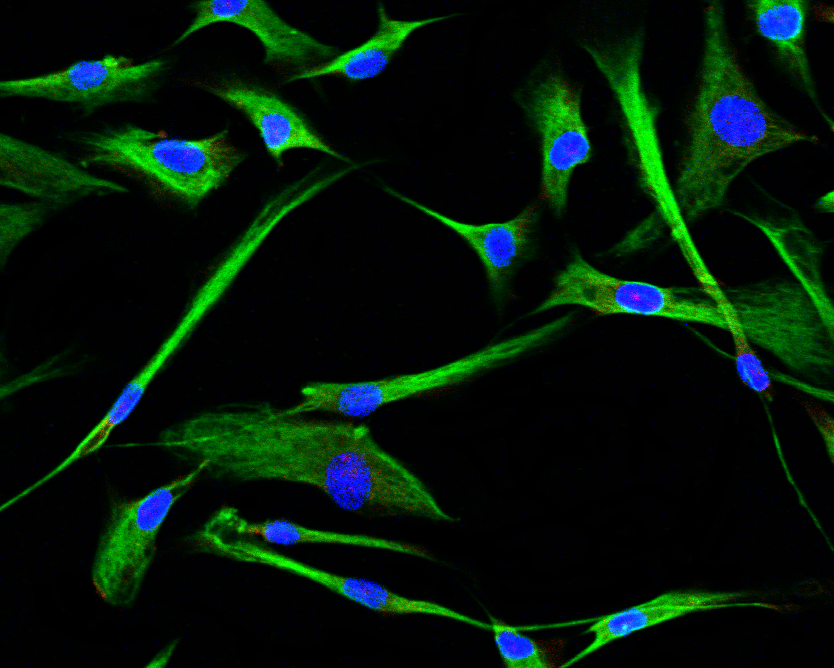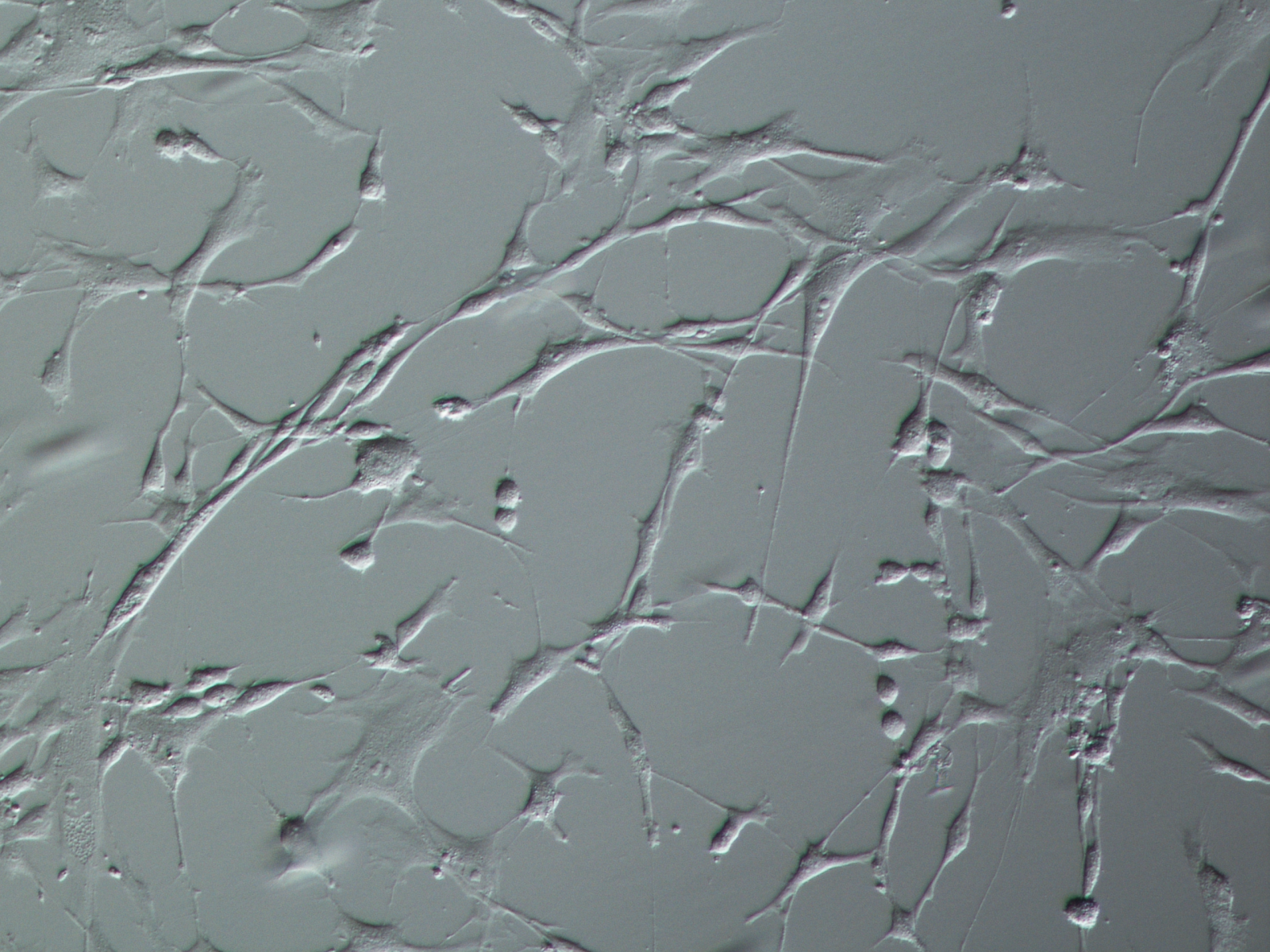Overview
It is possible to study cell-cell and cell-matrix interactions, airway inflammation, ECM remodeling, fibrosis, and wound healing using MatTek’s Normal Human Bronchial Fibroblasts (NHBF). There are NHBFs available from healthy donors and also from donors who have a known history of smoking or who have conditions like asthma and COPD.

NHBF DAPI (blue), Vimentin (green). Image Credit: MatTek

NHBF DAPI, Golgin, 60×. Image Credit: MatTek

NHBF DAPI (blue), Vimentin (green), 20×. Image Credit: MatTek
Features
In monolayer culture, Normal Human Bronchial Fibroblasts (NHBFs) display spindle-like morphology and are identified by positive vimentin staining, a fibroblast marker. When handled in accordance with MatTek’s NHBF protocol, the cells are guaranteed to offer a minimum of 15 population doublings and ≥75% viability upon thawing.

Normal Human Bronchial Fibroblasts, Phase Contrast 10×. Image Credit: MatTek